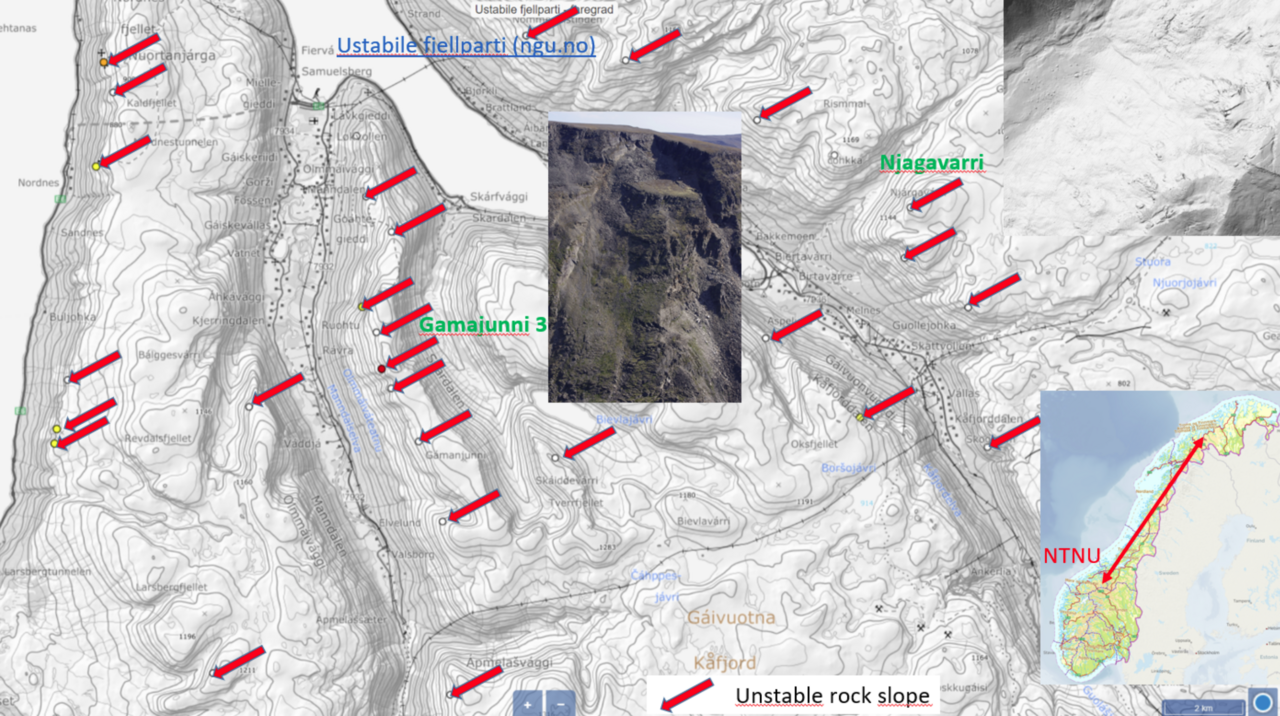ESR09: Environmental seismology for detection of rockslide activity in Norway
Description:
Active rockslides occur in high mountain terrain where multiple surface processes including rockslides, snow avalanches, rack fall, and rock glacial creep are coexisting and are primarily driven by geological processes and climate change. Rockslide activity is manifested by the failure process at depth as well as rock fall activity at its surface. Precise localization of the seismic source and its characteristics is thus essential to use environmental seismology to better characterize the rockslide activity in its three dimensions. This is especially applicable at depths where surface monitoring systems have no access to. Characterization of seismic signals from rockslide processes with different failure characteristics will be employed on selected sites in northern and western Norway. Comparison of seismic signals with monitoring data of the rock slope obtained from satellite-based InSAR with a temporal resolution of 6 days (SENTINEL data) and environmental data (precipitation, rainfall) from weather stations will allow a better understand of the seasonal impacts of meteorological conditions on the rockslide activity. Data from the site in western Norway was collected over the past two years. Two additional sites will be instrumented in northern Norway in this project, where 28 sites with important post-glacial deformation exist. Some of those are among those with the highest deformation rates in Norway today. Some of the sites are instrumented with corner reflectors that enable for year-round monitoring of surface deformation. This guarantees deformation monitoring of the rockslide all year round, making the area an ideal natural laboratory to better understand deep-seated rockslide activity.
This work package thus aims at training seismic signal analyses on monitored slopes (relating seismological signals to displacement rates) during varying environmental conditions throughout the year.
The goal of the project is to develop a method to detect rockslide fracture processes with seismological tools to allow:
The localization of the rockslide process
The classification of the rockslide process
The quantification of the rockslide process
Link to the NTNU institution advertisement: https://www.finn.no/job/fulltime/ad.html?finnkode=276604808
Keywords: rockslides, rock fall, seismic waves, environmental conditions, InSAR
Host institute: Norwegian University of Science and Technology, Norway
Supervisors: Reginald Hermanns (NTNU), Gökhan Aslan (NGU)
Co-supervisor: Eric Larosse (UGA, France)
Collaborations: During the project, close collaborations are envisaged with Volker Oye (NORSAR) and other institutions participating in the EnvSeis project dealing with landslide processes.


